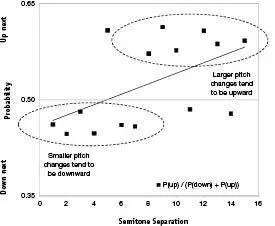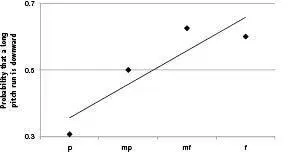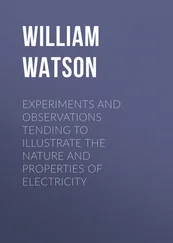Mark Changizi - Harnessed - How Language and Music Mimicked Nature and Transformed Ape to Man
Здесь есть возможность читать онлайн «Mark Changizi - Harnessed - How Language and Music Mimicked Nature and Transformed Ape to Man» весь текст электронной книги совершенно бесплатно (целиком полную версию без сокращений). В некоторых случаях можно слушать аудио, скачать через торрент в формате fb2 и присутствует краткое содержание. Год выпуска: 2011, Издательство: Perseus Books Group, Жанр: Старинная литература, на английском языке. Описание произведения, (предисловие) а так же отзывы посетителей доступны на портале библиотеки ЛибКат.
- Название:Harnessed: How Language and Music Mimicked Nature and Transformed Ape to Man
- Автор:
- Издательство:Perseus Books Group
- Жанр:
- Год:2011
- ISBN:нет данных
- Рейтинг книги:5 / 5. Голосов: 1
-
Избранное:Добавить в избранное
- Отзывы:
-
Ваша оценка:
- 100
- 1
- 2
- 3
- 4
- 5
Harnessed: How Language and Music Mimicked Nature and Transformed Ape to Man: краткое содержание, описание и аннотация
Предлагаем к чтению аннотацию, описание, краткое содержание или предисловие (зависит от того, что написал сам автор книги «Harnessed: How Language and Music Mimicked Nature and Transformed Ape to Man»). Если вы не нашли необходимую информацию о книге — напишите в комментариях, мы постараемся отыскать её.
Harnessed: How Language and Music Mimicked Nature and Transformed Ape to Man — читать онлайн бесплатно полную книгу (весь текст) целиком
Ниже представлен текст книги, разбитый по страницам. Система сохранения места последней прочитанной страницы, позволяет с удобством читать онлайн бесплатно книгу «Harnessed: How Language and Music Mimicked Nature and Transformed Ape to Man», без необходимости каждый раз заново искать на чём Вы остановились. Поставьте закладку, и сможете в любой момент перейти на страницу, на которой закончили чтение.
Интервал:
Закладка:
In addition to the issue of whether pitch changes continue to change in the same direction, we can make a simpler observation. Let’s ask ourselves what the baseline expectation is for the Doppler pitch change of a mover. One’s first intuition might be that, in the absence of any information otherwise, we should expect a mover’s Doppler pitch to remain unchanged from one step to the next. Doppler pitches, however, do not typically hold still. Instead, the most fundamental baseline expectation (inertia) is that movers continue moving in whatever direction they were going. People tend (though not as strongly as inanimate objects!) to keep going straight, and thus the baseline, or generic expectation, for pitch change is that pitch falls , and generally by a small amount (compared to the pitch changes of a turner).
Now consider another observation about movers. Suppose that a mover is carrying out bouts of behavior around you, and is directing those behaviors toward you. Notice that this mover will have to make intentional turns toward you to keep orienting his behavior toward you. But also notice that he or she never has to deliberately turn away from you. This is because once a mover is directed roughly but not exactly toward you, going straight inevitably leads to a movement like veering away. Simply going straight will cause the mover to pass by you and depart. Turning is necessary to go toward someone, but not to go away. (This is essentially because a listener is in one location, and all the other locations are where that listener is not .) Thus, if musical melody is about listener-directed bouts of behavior, not only do we expect small pitch changes to more commonly be downward, we expect large pitch changes to more commonly be upward.
Do we find this in music? Do we find that melodic contours have a general tendency to fall gradually? And do we find that pitch drops tend to be smaller than pitch rises? Piet G. Vos and Jim M. Troost of the University of Nijmegen indeed found this among a sample from the Dictionary of Musical Themes . We carried out our own measurements over the entire data set: Sean Barnett measured the relative probability that a pitch changes upward (so that a probability greater than 0.5 means an upward tendency, and a probability less than 0.5 means a downward tendency) as a function of the size of the pitch change. One can see these results in Figure 49. For small pitch changes, the probabilities are mostly below 0.5, meaning that small pitch changes tend to be downward, as expected. And for large pitch changes the probabilities are mostly above 0.5, meaning that large pitch changes tend to be upward, also as expected.

Figure 49. The y-axis shows the relative probability that a pitch will go up on the next note, among the 10,000 classical themes in Barlow and Morgenstern’s Dictionary. A value of 0.5 means it is equally likely to go up or down in pitch. The x-axis represents how far the pitch changes (in number of semitones). One can see that for small pitch changes the probability tends to be below 0.5, meaning pitches tend to fall. But for large pitch changes, they tend to rise. Sean Barnett, then a graduate student at RPI, made these measurements.
Another characteristic difference between rising and falling Doppler pitches from movers is that when a mover passes by, going straight, the pitch doesn’t just fall slowly with “inertia,” but continues to fall over an extended portion of the pitch range. The train that has reached your position has, for example, dropped from its maximum pitch to its baseline pitch, and will then drop through the lower half of the pitch range as it goes past and away. These kinds of long Doppler pitch runs, then, are more commonly downward than upward for movers in the physical world. Are long pitch runs for melodies more commonly downward than upward? Sean Barnett measured runs among the 10,000 classical themes. In particular, he recorded runs spanning the bottom or top half of the theme’s tessitura. Setting a low bar for what counts as a run—two or more notes approximately filling (more than 80 percent) the upper or lower half of the tessitura—51.86 percent of the 212,542 runs were downward. A two-note run is not very runlike, and our expectation is that if we create a more stringent standard for what counts as a run, then we should find an even greater asymmetry between up and down, with an even greater share of runs being down. Indeed, when Sean required a run to have five or more notes in the same direction, 54.22 percent of the 11,119 runs that qualified were in the downward direction.
Consider now yet another ecological regularity in this vein. Let’s ask ourselves: are these falling-pitch runs due to straight-moving movers more likely to occur when movers are near or far? When a mover is far away, in order for that mover to implement a long downward run, the mover must continue straight for a great many steps without turning. It is quite likely that the mover will turn somewhere over the course of that long walk. But if the mover is close by, the mover need only move straight for a relatively small number of steps to engender a substantial downward pitch run. Big downward Doppler pitch runs are therefore disproportionately probable when near. Do we find this in music? As we discussed in Chapter 4, distance from the listener is encoded in music by loudness, and so our expectation here is that louder segments of music (i.e., passages depicting a more proximal mover) are more likely to have good-sized downward pitch runs. RPI graduate student Romann Weber measured runs spanning at least half the tessitura from Denes Agay’s The Classical Period , and calculated the probability that such pitch runs are downward as a function of loudness. As can be seen in Figure 50, the probability of a large downward pitch run rises with loudness, consistent with the ecological expectation.

Figure 50. Pitch runs spanning at least half the tessitura width among a sample of 37 pieces from Denes Agay’s An Anthology of Piano Music, Vol. II: The Classical Period . Forty such runs were found, the loudness during the run measured, and the relative probability that the run is up or down computed. Louder segments of music have a greater probability of long downward runs, consistent with expectations from human movement.
Newton’s First Law is found in music where it should be found if melodic pitch is about Doppler shifts. Melodic pitch acts like a mover’s direction, and thus has no pitch momentum, just as inertia predicts. But as we looked more closely, we realized that there are fundamental asymmetries between upward and downward Doppler pitch changes, asymmetries also found in melody. Melody does show pitch momentum in the special case of small downward changes in pitch, as expected from the dynamics of movers. And melody generally drifts downward gradually, as expected from the fact that all straight-moving movers have slowly falling pitch (unless moving directly toward or away from the listener). And melody takes larger jumps upward than downward in pitch, also something expected from movers orienting their bouts of behavior toward you. Melody also favors longer runs downward than upward, something we also expected from the sounds of movers. And finally, like closer movers, louder segments of music tend to have disproportionately more large downward pitch runs.
Читать дальшеИнтервал:
Закладка:
Похожие книги на «Harnessed: How Language and Music Mimicked Nature and Transformed Ape to Man»
Представляем Вашему вниманию похожие книги на «Harnessed: How Language and Music Mimicked Nature and Transformed Ape to Man» списком для выбора. Мы отобрали схожую по названию и смыслу литературу в надежде предоставить читателям больше вариантов отыскать новые, интересные, ещё непрочитанные произведения.
Обсуждение, отзывы о книге «Harnessed: How Language and Music Mimicked Nature and Transformed Ape to Man» и просто собственные мнения читателей. Оставьте ваши комментарии, напишите, что Вы думаете о произведении, его смысле или главных героях. Укажите что конкретно понравилось, а что нет, и почему Вы так считаете.












